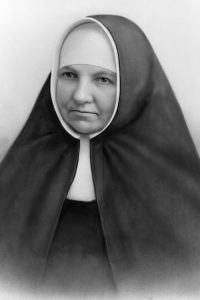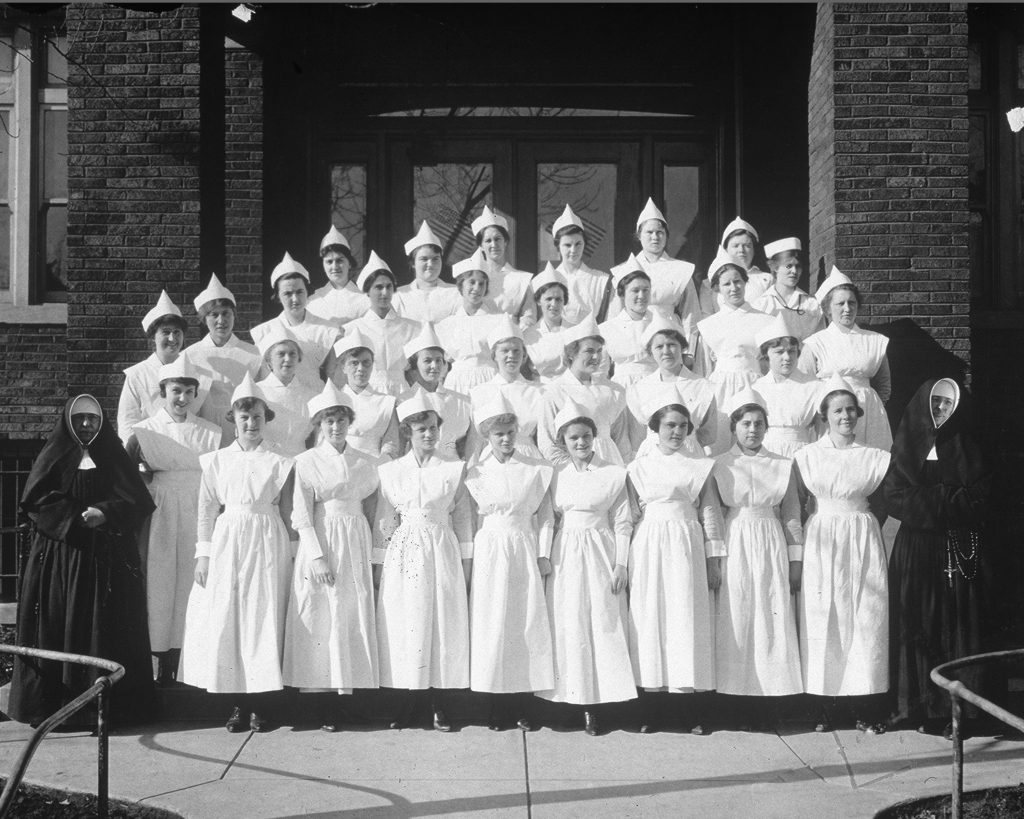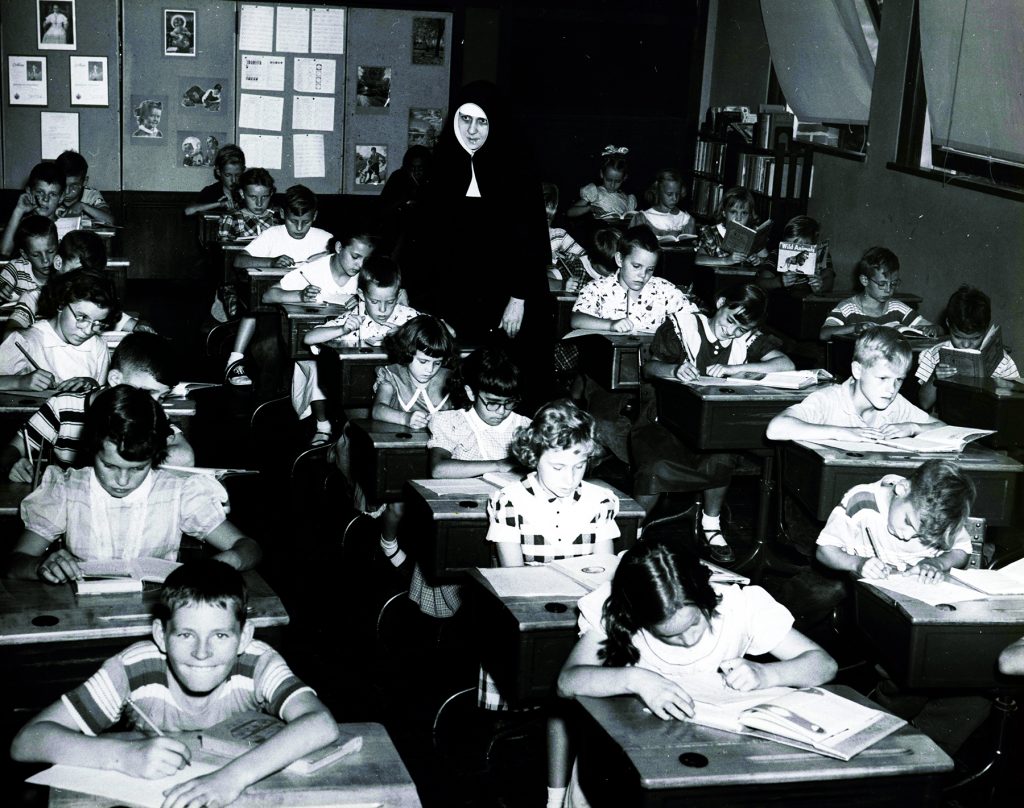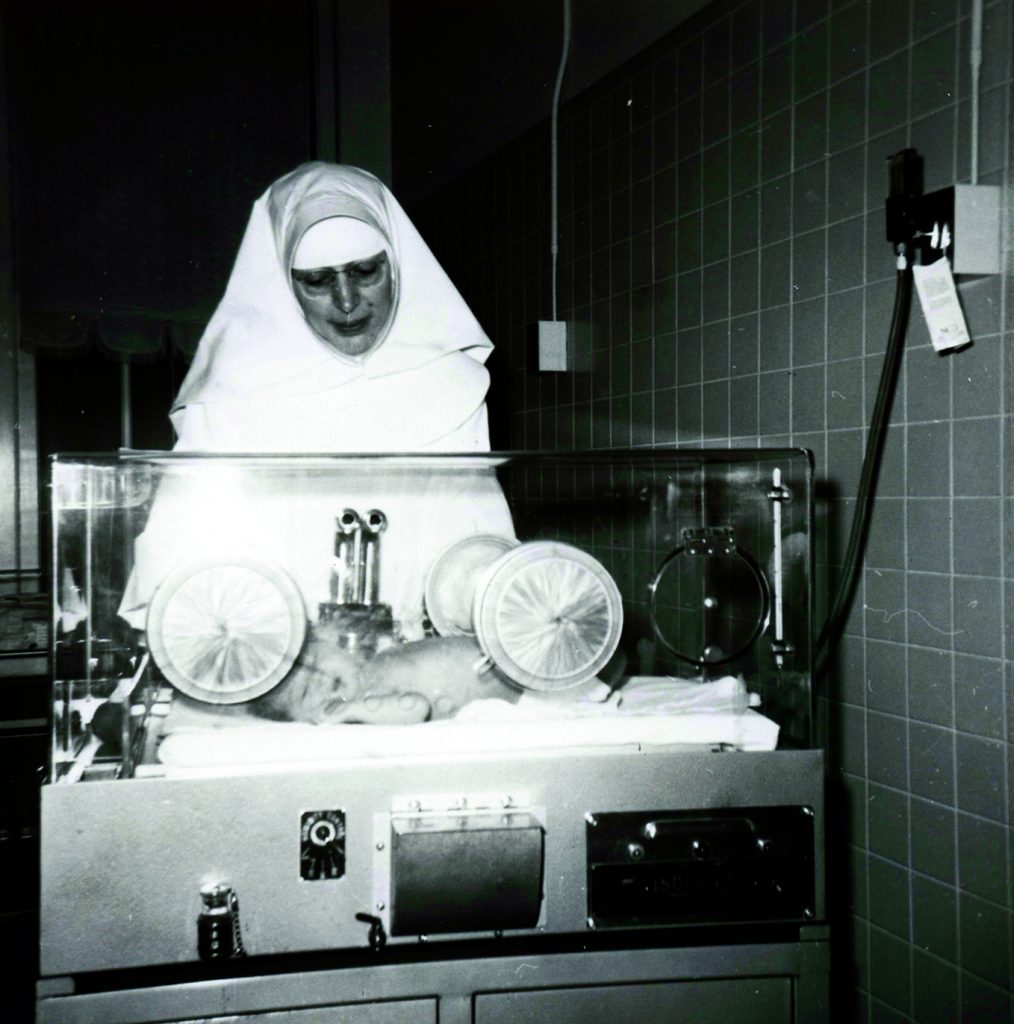July 17, 2018 // Special
Poor Handmaids celebrate 150-year history of U.S. ministry that began in Fort Wayne
The year 2018 is a milestone for the sisters of the Poor Handmaids of Jesus Christ, who started their U.S. ministry in Fort Wayne 150 years ago and made an indelible mark on the entire Midwest.
The international congregation that now numbers approximately 550 women religious was founded in Germany by Mary Catherine Kasper in 1851. The young community was devoted to caring for the poor, the sick and the children. Because of this, the PHJC became well-known throughout central Europe.

Blessed Mary Catherine Kasper, founder of the Poor Handmaids of Jesus Christ in Germany, extended the order’s ministry and impact responding positively in 1868 to Bishop Luers’ request for assistance in ministering to the influx of German immigrants to the diocese.
Mother Kasper, her assistant and eight PHJC left Germany, via France, on Aug. 28, 1868, in response to an invitation from Bishop John Henry Luers, who asked for them to address the spiritual and educational needs of the many German immigrants who had settled in the area. They settled in the Hessen Cassel area, south of Fort Wayne, and more sisters followed. Within a short time, they had begun teaching as well as nursing in the local homes in the area.
The mission expands
Three of those eight sisters were subsequently sent to Chicago to care for a group of 20 children whose parents had been killed during the Civil War. Their ministries included staffing for more than a century what would eventually become the Angel Guardian Orphanage — one of the largest and most prominent orphanages in the United States.
 Several months after their arrival, much to the surprise of the sisters, Bishop Luers requested that they control and manage a hospital, with the right to purchase it in the future. Two sisters moved from Hessen Cassel to Fort Wayne and in 1879 purchased St. Joseph Hospital.
Several months after their arrival, much to the surprise of the sisters, Bishop Luers requested that they control and manage a hospital, with the right to purchase it in the future. Two sisters moved from Hessen Cassel to Fort Wayne and in 1879 purchased St. Joseph Hospital.
Realizing the speed at which missions were being established in America, Mother Kasper sent even more sisters from Germany. With the arrival of the additional sisters, and with young women joining the American province, the congregation spread throughout Indiana and Illinois.
Over the next 150 years, PHJC sisters helped facilitate or staff about 40 care-providing entities in the South Bend area — including health centers and parish schools — and others in Valparaiso, LaPorte, Gary, Hammond, Michigan City and other Indiana cities. Among their other ministries in the Fort Wayne area the sisters founded Central Catholic, the forerunner of Bishop Luers and Bishop Dwenger high schools. They also helped initiate ministries or served in East St. Louis; Milwaukee; New Ulm, Minnesota; and dozens of other communities throughout the Midwest. Today, the PHJC charisms extend to Ohio, Georgia and Rhode Island; and the countries of Mexico, Brazil, Kenya and Germany. The Poor Handmaids have supported approximately 400 ministries since 1868.
Motherhouse established at Donaldson
For 50 years, St. Joseph Hospital and the PHJC motherhouse were co-located in the building at Main and Broadway in Fort Wayne. But the growing number of patients necessitated change around the start of WWI, according to Julie Dowd, the order’s communications and marketing director. The decision was made after it became a regular occurrence that the sisters would leave their beds in the morning, and when they came back, they’d find a patient in it.
Unknown to the sisters, a Chicago wine merchant, Louis Glunz, had built a resort on a small lake near Donaldson, about 75 miles northwest of Fort Wayne. However, by 1918 as prosperous as the resort was, Glunz became tired of managing both it and his wine shop in Old Town Chicago and decided to sell the resort. The sisters met him in Donaldson on Feb. 23, 1918, to see the property. It was perfect, and the price was right. Glunz charged $33,000, since Christ had lived for 33 years. The sale included the hotel and all its furnishings, 63 acres of land, all the farm equipment and stock, two motor vehicles and the small chapel. Originally the site was to be a retreat center for the sisters, but the bishop suggested that the province build its new motherhouse there instead.
Anniversary celebrations
Catherine Kasper, known in religious life as Mother Mary, died on Feb. 2, 1898. Her good works and following the life of Christ caused the Catholic Church to name her Blessed Catherine Kasper on April 16, 1978.

Education was defined as one of the major ministries of the Poor Handmaids of Jesus Christ in America in the late 1800s. One of the many schools in which they served was St. Vincent Villa, a Fort Wayne orphanage and school for homeless children. — Property of the University of Notre Dame Archives
The 150th anniversary year of PHJC presence in America is being celebrated throughout the year by members of the order, and many are open to the community. Events began in May with the 40th anniversary of the beatification of Blessed Catherine Kasper; a highlight will be the Coming Home weekend celebration that takes place Aug. 18-19. Tours of the campus, social activities, displays, prayer gatherings and more will take place on Saturday; on Sunday, at 11 a.m., Bishop Kevin C. Rhoades will celebrate Mass in Ancilla Domini Chapel.
The sisters will also attend the canonization of their foundress on Oct. 14 in Rome. A contingent from their motherhouse in Donaldson will go; among them will be Sister Carole Langhauser, who served as vice president of mission integration when she was assigned to St. Joseph Hospital from 2003-13.
“I am so excited because Catherine Kasper will be known more formally in the Church and the world,” she said. “She was a woman of simple means and education but (who) influenced all she met by her example and kindness.”
Another member of PHJC, Sister Connie Bach, admires Blessed Catherine Kasper as a simple, compassionate woman dedicated to serving the poor and needy. With the canonization, the humble, behind-the-scenes woman with her beautiful charisma will be known around the world, Sister Connie said.
On July 21, the story of another PHJC sister who is on track to become the order’s second saint will be presented. Aloysia Lowenfels was part of a Jewish family growing up in Bavaria, Germany, in the 1920s and 1930s. Overlooking her family’s objections, she converted to Catholicism and became a PHJC sister, according to information about her beautification. As persecution of Jews by the Nazis increased, she moved to the Netherlands and continued doing God’s work. She was arrested and imprisoned briefly in Auschwitz in 1942 and murdered on Aug. 9. Her story, “The Life, Spirituality and Beatification Process of Sr. Aloysia, PHJC,” will be presented from 1 to 4 p.m. on July 21, in Cana Hall at the Center at Donaldson by Sister Christiane Humpert.
Bishop Rhoades will commemorate the canonization during another community and eucharistic celebration at 11 a.m. on Nov. 4 in the Ancilla Domini Chapel. A prayer service to close the 150th anniversary year will take place from 2-4 p.m. Dec. 30 in Ancilla Domini Chapel.
For more information on any PHJC event visit www.poorhandmaids.org.
Julie Dowd contributed to this article.
The best news. Delivered to your inbox.
Subscribe to our mailing list today.







